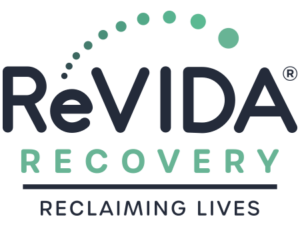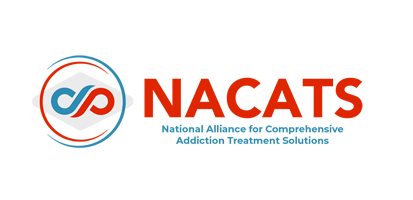
As a parent or loved one who doesn’t take substances, it can be difficult to understand the reasons behind opioid use disorders. Why did my loved one start taking heroin? Who invented it in the first place; who would make something that causes such a powerful dependence?
Not to mention, why would they make something that could cause death? In 2022, over 3,000 Tennessee residents died from an opioid overdose. Losing a loved one is heartbreaking, and increases your reasons for trying to understand why.
ReVIDA® Recovery understands this pain and the need to have answers. Our blog is here to answer those questions by educating on where opioid use disorders stem from, and providing treatment for those who need it.
Today, we are discussing opium and heroin – how are they alike, how are they different, and do they cause addiction? The answer might surprise you.
Table of Contents
Opium: The Natural Precursor
Opium is a non-synthetic opioid, also known as an opiate. It is derived from chemical compounds that are extracted from the poppy plant. Opium has been around since early B.C. times, originating in what is now called Southwest Asia. After feeling the effects it created, opium was passed around throughout Egypt where it became an in-demand product. Throughout the next centuries, opium would be developed for medicinal uses, but the rate of illicit use began to cause more harm than good. Opium itself is not as potent as other derivatives, but it is the basis for all opiate and opioid products.
Opium comes from the seedpods of the poppy plant. Small incisions are made in the pod where a milk-like fluid is collected. This is then dried and becomes opium resin. Once the resin is mostly dry, it is stored in bags or rolled into packaged balls and is ready for sale.
Heroin: A Potent Derivative
Heroin is a semi-synthetic opioid and can be classified as an opioid or opiate depending on the refinement. As an opioid, it is derived from the poppy plant. When the liquid inside the poppy plant seedpods is collected, it can have different purposes for producing opiate products, typically with higher potencies. The more chemical processes the liquid goes through, the potency increases. Morphine and codeine are some of the substances produced, but the most potent is heroin.
Heroin was a popular trade product alongside opium as they were easy to transport due to its long shelf life. Heroin was (and still is) produced using the Southwest Asian method and would get transported through Asia to Europe. Immigrant workers brought heroin and opium products to the United States in the 1800s where they introduced it to railway workers.

Opium and Heroin: How Are They Similar?
As we mentioned above, both heroin and opium are in the opiate family, meaning they will produce similar effects. They also carry the same risk of developing dependence. Let’s look at the effects each substance causes.
Short-Term Side Effects Produced
Both opium and heroin work by attaching to opioid receptors. No matter how each substance is ingested, they both cause the same effects within the brain. Common short-term effects of opium and heroin include a rush of euphoria, relaxation, drowsiness, and dizziness. If use continues, constipation, dry mouth, and bouts of nodding in and out of consciousness will occur. While short-term use does not necessarily mean the person has an opioid use disorder, it can spark the development of one.
Long-Term Side Effects
As the use of opium and/or heroin continues, the brain and body will begin to experience long-term damage. Opium and its derivatives have been understudied when it comes to heart health. However, in recent years, studies have shown the negative effects that opium and heroin have on the cardiovascular system. When opium or heroin are taken long-term, sex hormones, physical activity, and the ability to sense cardiac pain all decrease. At the same time, this causes insulin resistance, inflammation, and proteins that transport “bad” cholesterol (low-density lipoprotein or LDL) to increase. This increases the chances of experiencing a cardiac event as well as developing coronary artery disease.
Differences Between Opium and Heroin
Although in the same class of substance, there are differences between opium and heroin. Opium itself was used as an anti-diarrheal, anesthetic, and cough suppressant in early times. However, opium was around before any government regulations of substances, and is not technically Food and Drug Administration approved. Its derivatives including morphine and codeine are regulated and serve medicinal purposes today, most often prescribed to treat severe pain. Opium is classified as an opiate because it is a natural product of the poppy plant, as are morphine and codeine.
Heroin serves no medicinal purpose and is an illegal substance. Although it is derived from opium, heroin undergoes extensive chemical processes that contribute to its potency. Morphine is 10 times more potent than opium, and heroin can be up to 50 times more potent than morphine. When opium goes through the Southwest Asia method to become heroin, it is still considered an opiate. In most cases when heroin enters the United States, however, it is synthesized further to increase its effects. This makes it semi-synthetic and classifies it as an opioid.
Comparing Negative Effects and Risks of Opium & Heroin
Both opium and heroin carry the risk of developing dependence. This occurs when the person keeps taking either substance regularly and builds tolerance. Our brains naturally have neurotransmitters and hormones that will attach to opioid receptors. One of these is endorphins, which produce feelings of pleasure through activities and experiences such as exercising, listening to music, or eating a piece of chocolate. When heroin or opium enter the body, they essentially hijack the natural opioid receptor system. Take heroin or opium away and the system will no longer naturally produce endorphins and similar hormones. The person will feel depressed and take more heroin or opium to alleviate those feelings. As time goes on, it will take more of either substance to achieve the same results, building tolerance.
As tolerance increases, the brain becomes more dependent on heroin and opium. When the substances are no longer present, the brain sends signals indicating it needs more. This is known as withdrawal and causes uncomfortable symptoms. Common opiate withdrawal symptoms include:
- Joint and bone pain
- Muscle cramps
- Stomach discomfort and nausea
- Diarrhea
- Flu-like symptoms such as runny nose and eyes
Withdrawal is not typically life-threatening but can increase cravings for heroin and opium. The person does not want to feel sick anymore and takes more of either substance to feel better. This can increase the risk of an overdose as the body is already starting to rid itself of heroin or opium. Taking a dose similar to what they were taking before can overwhelm the body, causing breathing to slow or stop. This is a tell-tale sign of an overdose, which is a medical emergency. If you suspect an overdose, call for help immediately.
Risk Factors for Developing Opium or Heroin Dependence
There is no guarantee that the first time someone takes a derivative of opium they will become dependent. However, there are some factors that can influence the likelihood of developing an opioid use disorder. Some factors include:
- Having parents or siblings who use opioids
- Growing up in a stressful environment including poverty, constant moves, domestic violence, and abuse
- Being genetically predisposed to reckless behavior
- Having a mental health condition such as depression or anxiety

Recovering From Opioid Use Disorder in Tennessee
Trying to fathom how your loved one developed an opioid use disorder can be grueling – you just want the person you know and love back. The good news is that it is possible, and help is available right now. Heroin addiction treatment can bridge the gap between you and your loved one and provide the help they need to begin healing. Opioid use disorders don’t pop up overnight, and therapy will get to the root causes behind what started your loved one’s use. Once the body and mind begin to heal, your loved one will be ready to enter the world of recovery as the person you know and love.
If you or someone you love is managing an opioid use disorder, help is available right now. ReVIDA® Recovery offers flexible, outpatient programming paired with medication-assisted treatment (MAT). Our dedicated care team is here to provide guidance and pave the way for your successful recovery. Call us today at 423-631-0432 to schedule a same-day appointment.
Reclaim your life.









